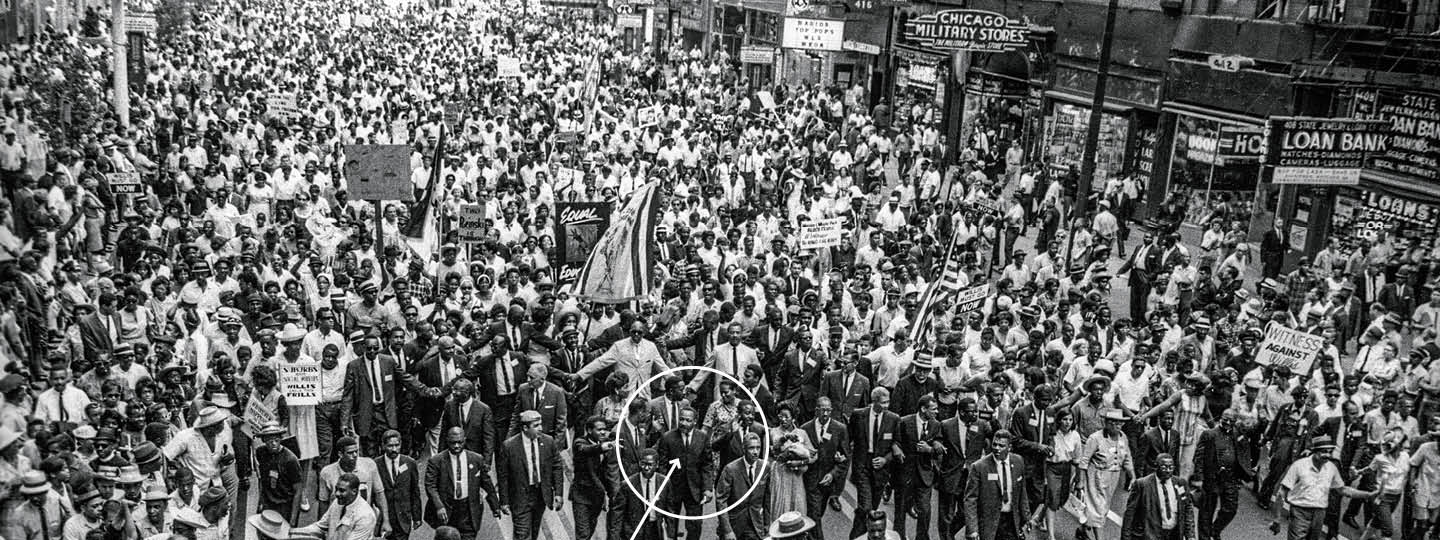Martin Luther King Jr. and his wife, Coretta, moved into a decrepit walk-up apartment on the West Side of Chicago in January 1966. The building’s front door had a broken lock, and a single dim bulb lit the stairwell. Nothing in the dingy apartment worked very well: The refrigerator didn’t keep food cold, and the gas stove didn’t get food hot.
The idea was for King—fresh off a string of victories in the South in his fight for civil rights—to draw attention to the poor living conditions that many African Americans were forced to endure in Northern cities.
“You can’t really get close to the poor without living and being here with them,” King told reporters at the time. “A West Side apartment will symbolize the slum-lordism that I hope to smash.”
In January 1966, Martin Luther King Jr. and his wife, Coretta, moved into a rundown walk-up apartment on the West Side of Chicago. The building’s front door had a broken lock. A single dim bulb lit the stairwell. Nothing in the dingy apartment worked very well. The refrigerator didn’t keep food cold. The gas stove didn’t get food hot.
King was fresh off a string of victories in the South in his fight for civil rights. Now he wanted to draw attention to the poor living conditions that many African Americans were forced to endure in Northern cities.
“You can’t really get close to the poor without living and being here with them,” King told reporters at the time. “A West Side apartment will symbolize the slum-lordism that I hope to smash.”

